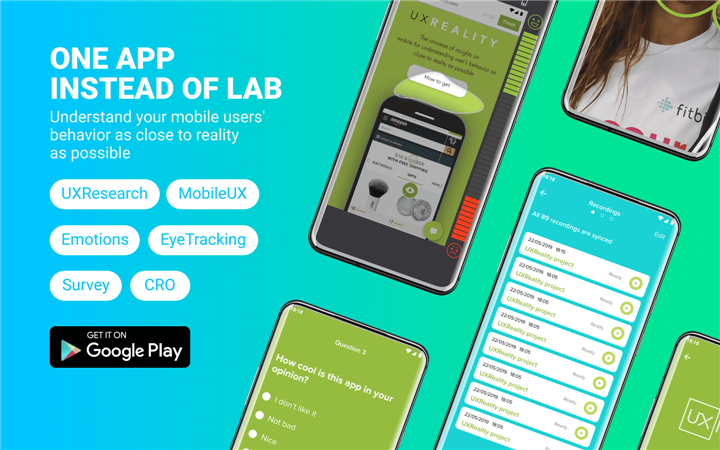Source: created by Faldi
Almost 40% of people will leave a website if the content or design is not attractive.
Here are 10 tips to improve the user experience of your mobile website and increase conversions and commitment.
If done well, the user experience design (UX) is often not noticed.
Good mobile UX moves visitors seamlessly between web elements. It gives your website clarity and intuition and encourages conversions.
But, if done badly, visitors become frustrated and confused, and businesses can suffer.
So, what is UX?
The mobile UX design is the process of improving user satisfaction by improving the accessibility, ease of use and efficiency of user interactions on your mobile website.
Taking care of the user experience of our mobile web we will be able to help our visitor to find the most relevant information and to position our site. Taking into account data such as what is the objective of the page, what is to be communicated and the ability of a client to use the mobile web, we begin to outline the bases on which we will build the mobile website, considering the best practices of UX mobile Design.
It is because of the above that many people, for example, prefer to consult the prices of a product on Amazon, since its mobile usability is an example to follow. Its interface is fantastic, the purchase process is very simple, and you basically get what you need in a few clicks.
Mobile visitors make decisions of a fraction of a second on their site based on a variety of design elements.
Since the website is the center of your online marketing and sales efforts with the most visitor using their mobile devices, it is critical that these pieces become a valuable and rewarding experience.
According to new research from the B2B Clutch research firm, improving the UX of the mobile website is the highest priority for 16% of small businesses.
When John Kosner, Director of Digital Media at ESPN.com, incorporated a series of user suggestions on the brand’s mobile website, the company saw a 35% increase in revenue for the best user experience.
Here are 10 web design tips to improve the user experience (UX) of your mobile website.
1. Allow blank space
The white space is a key element of good mobile responsive website design.

The creation of a margin also called negative space, allows text blocks and images to stand out on the page.
According to the Crazy Egg conversion tool, filling text and titles with blanks increases user attention by 20%.
Space is what makes your website feel open and easy to use. This “space to breathe” enhances how engaging and readable its content is.
However, you will want to balance the need for valuable content with the white space, especially on the fold (the area immediately visible before scrolling).
The key is to identify what is most important and assign an appropriate real estate website, avoiding the clutter of pages.
Clarity and openness invite visitors to explore further.
2. Improve the speed of the page
Website visitors anticipate having a fast and frictionless online experience.
According to Econsultancy, 40% of web visitors leave a page that takes more than 3 seconds to load; according to the provider of load balance and cybersecurity services Radware, waiting more than 2 seconds in loading a web results in an abandonment rate of up to 87%. Users describe this experience as one of the most frustrating. Web pages that load within one to two seconds will see the greatest conversions.
Mobile use allows users to access content from anywhere, which increases the expectation that web pages load quickly.
Users will normally bounce if your site is slow, as it interrupts your fluid browsing experience.
What can you do?
We can improve this situation by changing the size or eliminating large images, reducing the number of plugins in our site, eliminating flash files that worsen performance and using the cache to minimize the load time each time the user enters our mobile website.
Use the free services provided by Google to evaluate the speed of your website and mobile website.
3. Create an attractive “call to actions”
Customers browse their website following visual indications that move them between essential pieces of content.
Calls to action (CTA) make use of active words and prominent buttons to help users survey your site and inspire the next step.
When designing your CTA buttons, take into account the impact of color on the user’s psychology.

https://stripe.com/
Also known as color psychology, the application of different tones will cause different feelings and results of web visitors.
The color of CTAs can result in a disjointed UX or an increase in conversions.
For example, when Sitepoint changed from a green CTA button to a red one, they saw a 35% increase in conversions.
You should also acknowledge the words on your CTA buttons.
The use of active verbs drives the action and illustrates the benefits your visitors will receive when converting.
The more actionable, emotional and time sensitive your CTA is, the greater your conversions will be.
4. Using bullets
Great UX website makes it simple to gather information.
Bullets assist people in finding the benefits, solutions, and key features of what you offer more quickly.
Presenting your proposals in bullet form will also make them more attractive and easier to remember.
You can skip the simple circles and be creative with your bullet points. Try using icons that describe the text to add meaning and image recognition to the UX.
Users will appreciate the variety and will benefit by reinforcing their message with visual help.
For example, Dollar Shave Club makes use of both graphics illustrated vignettes and lists of product images to speed up website navigation.
This simple UX design tactic allows you to highlight key information and create blank spaces to improve the readability of your website.
5. Choose original images

https://www.liam-rinat.com/
Today’s Internet users are expert judges of the company’s websites, so it’s best to avoid stock photography.
Generic photos are easily identified by clients, quickly ignored and less reliable.
Visual content is increasingly important for consumers.
According to MDG Advertising, 67% of consumers rate high-quality photos as very important for an online shopping decision, even more than ratings and reviews.
In fact, replacing archival photos with genuine images of a product or service increased conversions by at least 45%, according to a study conducted by the VWO conversion optimization platform.
Whether they are photos of employees or your product, authentic images will help create a unique and satisfying web experience your customers’ desire.
6. Write headlines directed
Your headers (and content) should align with what potential customers are looking for.
Using keywords in your titles will help you attract the right audience, make browsing easier, and attract more content consumption.
In addition to improving the UX, the use of the correct headlines also affects the ranking of search engine optimization (SEO).
Google gives headers more weight than regular content, so targeting the right words will improve both your search capability and the site experience.
7. Take time to draw and sketch.
The role of a mobile UX designer is to combine the role of a visual artist with that of a techie, paying attention to codes and digital designs, but always keeping in mind the creative part in order to conceptualize the ideas more clearly in a paper. For example, you have to think about positive and negative space, colors, perspectives, depth, design, and framing. Each of these elements must be an essential part of using a UX to improve mobile website performance.
8. User experience testing.
User experience testing is a very important aspect for improving the user experience of your mobile website. The idea of thinking aloud works very well in a wide variety of fields and situations. Several user-centered tests are carried out to evaluate the usability of a web based on some metrics: Accuracy, time, memory and emotional response (If satisfied, upset, stressed, etc.)

9. Use recurring pattern libraries for User Interface
The design patterns are also very important because if your purpose is to increase the mobile UX of your mobile website, you will have to take advantage of this resource. Between the patterns of design, we can find the way to show the data, how to order them, typical filters, data entry and selection in the different spinners or sliders and how to change between views.



